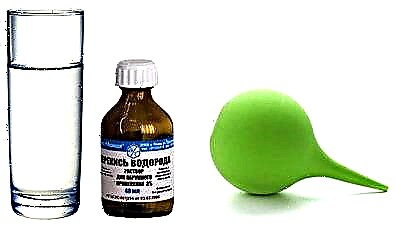Age-related changes in a woman are more associated with the development of hormonal imbalance. The involution of the gonads during menopause and menopause causes a sharp decrease in the level of estrogen, which regulates many functions of the female body. 50% of women over 45 have disorders of the autonomic nervous system and the emotional sphere. However, the most serious reason for going to a doctor is pain in the heart during menopause, which can be a sign of not only functional, but also morphological changes.
Signs of climacteric syndrome
In the development of a woman as an organism, several periods are distinguished:
- childhood (up to 12 years old);
- puberty (12-16 years old);
- reproductive age (16-45 years old);
- menopause (45-55 years old).
The latter is associated with the wilting of reproductive function and is characterized by a decrease in the activity of the gonads, gradual atrophy of the ovaries with irregular ovulation and menstruation.

In the body of a healthy woman with the physiological course of menopause, a similar period is painless with a decrease in the duration and abundance of menstruation. Pathological is characterized by the development of such syndromes:
- Vegetovascular... The most common symptom of hot flashes is a feeling of heat, redness in the upper half of the body, which ends with increased sweating. In addition, weakness, dizziness, and numbness of the fingers occur.
- Cardiovascular... It is manifested by an unstable increase in blood pressure to low values, cardiomyopathy with painful sensations behind the sternum, increased heartbeat.
- Neuropsychic... Signs: emotional lability, irritability, insomnia, memory impairment and constant fatigue.
- Endocrine metabolic disorders - obesity or weight loss, hirsutism, dysfunction of the thyroid, adrenal and pancreas.
Changes are observed in laboratory and instrumental research methods: an increase in the level of cholesterol, low-density lipoproteins (the reason for the development of atherosclerosis), on radiography - a decrease in bone density.
Menopause and the cardiovascular system
The hormonal changes that occur during menopause are largely caused by a decrease in ovarian function. In this case, the level of estrogen (estriol and estradiol) and progesterone gradually decreases.
Estrogen most affects the cardiovascular system, the action of which is realized through such effects:
- feminizing (an increase in the size of the uterus, ovaries, mammary glands, functional changes in the endometrium during the menstrual cycle, female-pattern hair growth);
- regulation of bone growth (the absorption of calcium in the body improves);
- procoagulant (blood viscosity increases due to increased synthesis of coagulants and a decrease in the activity of the anticoagulant system);
- antiatherosclerotic (the amount of free cholesterol decreases, the level of high-density lipoproteins increases).
A decrease in the synthesis of estrogens leads to an imbalance in the systems and the emergence of clinical symptoms of pathological menopause. The effect on the heart is carried out mainly through the coronary vessels and the central nervous system. Arising rhythm disturbances, chest pain and other symptoms are referred to as "climacteric cardiomyopathy". Read more about dyshormonal dysfunction of the heart muscle here.
The mechanism of development of the disease is not fully understood. It is believed that the appearance of a clinical picture is associated with a low level of estrogen, high functional activity of the hypothalamic-pituitary system (due to the synthesis of prolactin) and the depressive effect of ovarian follicular hormone. The blood supply to the myocardium is disrupted, involutive degenerative processes develop in the muscle fibers and the conducting system of the heart.
Characteristic features of the disease:
- occurrence after 45 years of age;
- the absence of symptoms upon reaching the postmenopausal period (when there is no lability in the level of hormones);
- persistent chest pain, not associated with physical activity;
- the occurrence of arrhythmias - sinus or paroxysmal tachycardia, atrioventricular block;
- accompanying symptoms - tinnitus, migraine, meteosensitivity, lability of blood pressure.
If you feel worse when the weather changes, we recommend watching the video below.
Heart pain in women with menopause: what it is and what to do
Pain syndrome is characterized by:
- high intensity;
- lasting from 20 minutes to several hours;
- frequency - up to 10 attacks per day;
- localization of pain - at the apex of the heart, on the left under the nipple;
- most often associated with emotional experiences, fatigue;
- not removed by traditional drugs for angina pectoris ("Nitroglycerin").
When a symptom of chest pain appears in women over 45 years of age, differential diagnosis is performed with angina pectoris and myocardial infarction.
Clinically, angina pectoris pain is intense, squeezing behind the sternum, with typical irradiation to the left arm and shoulder, the attack of which lasts up to 20 minutes and is relieved by "Nitroglycerin".
To exclude other possible diseases as causes of pain, it is recommended to perform the following diagnostic measures:
- regular monitoring of blood pressure and heart rate;
- electrocardiography (ECG);
- ultrasound examination of the heart (ECHO-KG);
- hormonal panel analysis (estrogens, progesterone, follicular hormone, prolactin and others).
The incidence of coronary heart disease in women at a young age is greater than in men. However, after the onset of menopause, when the former's cholesterol level rises, the indicators level out.
Conclusions
Most often, the appearance of chest pain in menopause is a sign of hormonal imbalance with the development of cardiomyopathy. Such a disease refers to functional states that disappear themselves after the establishment of a stable background in the postmenopausal period. In severe cases, with high intensity, pain syndrome, women are recommended hormone replacement therapy, pain relievers and sedatives. In addition, a healthy lifestyle and a lack of stress are of great importance.



